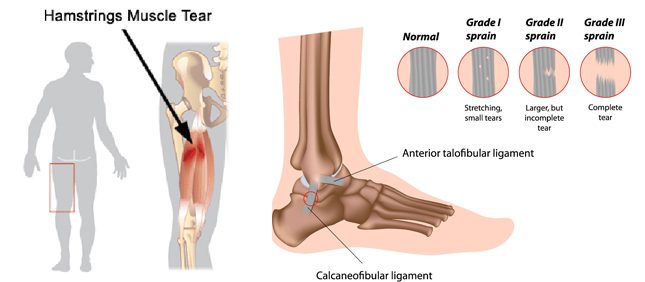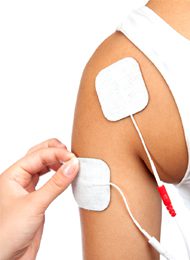This includes all the muscles, tendons and ligaments in the body. A muscle is a soft tissue that can contract to shorten and lengthen to create movement. A tendon is a type of soft tissue that cannot contract and it attaches a muscle to the bone. The ligaments are the same type of tissue as tendons, but they only attach bone to bone (over a joint) and can also not contract.
Tears and Sprains
Injury can occur in of these tissues is overstretched or is suddenly placed under abnormal stress. This can result in small tears developing which can cause localized bleeding and inflammation. If enough force is applied to the soft tissue, they can tear completely which will result in a loss of function as well as create an unstable joint. These type of injuries include ligament sprains/tears, muscle tears and tendon tears.

Overuse
Repeated strain of the tissue can lead overuse injuries that can become chronic. There is no trauma involved and the injury usually develops over a couple of days to weeks. The repeated strain can create inflammation in the tissue which can cause pain and loss of movement. Muscle weakness can develop over time as the patient tries to avoid the painful movements, thus making the problem worse. This group of injuries includes:
- Tendonitis and tenosynovitis
- Rotator Cuff Syndrome
- Tennis Elbow
- Golfer’s elbow
- Plantar fasciatis
- Jumper’s knee
Diagnosis
The diagnosis of soft tissue injuries starts with a good clinical evaluation. If trauma is involved and a tear is suspected, then an ultrasound can be sufficient to determine any damage and the underlying inflammation, and exclusion of more severe injuries.If this is unclear, a CT scan or MRI scan can also be used.
Treatment

Overuse injuries can become chronic and may respond slower to treatment. The physiotherapist should try and determine the underlying cause of the injury and try to modify this activity. This can include changing the office/computer set up or by providing bracing for a limited period. Treatments then focus on decreasing pain and swelling by using soft tissue massage, ultrasound and electrotherapy. Movement and strength are then improved with mobilization, stretches and rehab strengthening.
Recovery
Healing time will depend on the severity of the injury and the nature of the problem. Surgical repairs and physiotherapy rehabilitation usually follow a pre-set program and can last 6-12 weeks. For the overuse injuries this may be longer or shorter depending on how severe the injury is and how well the home/work modifications can be done.


